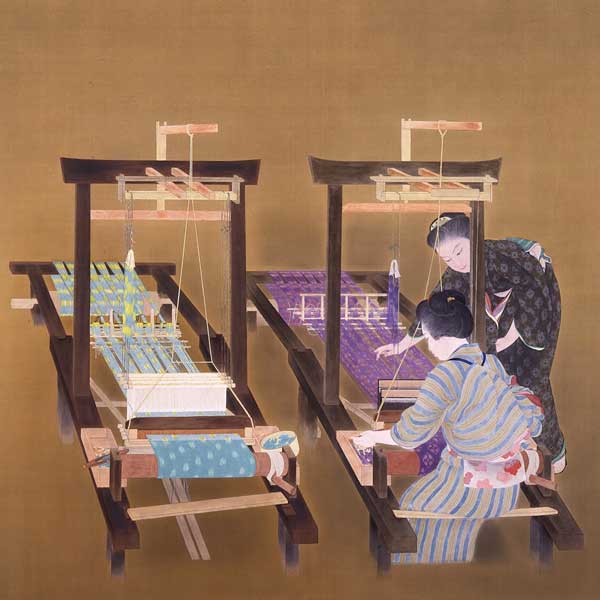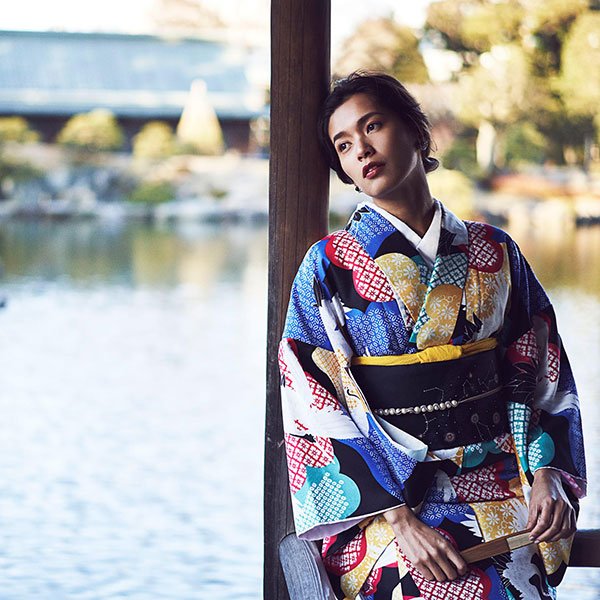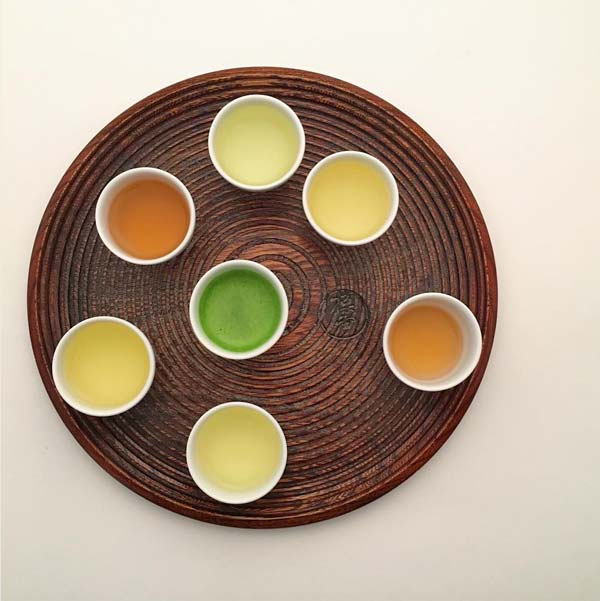20 Best Towns to Enjoy the Winter Snow in Japan
by Cassandra Lord | TRAVEL
© pelican / Creative Commons, Kenrokuen Gardens
Winter in Japan can mean a great deal of snow, but don’t let the cold put you off. In fact, the winter months are perhaps the best times to visit the island nation. Given Japan’s mountainous terrain and numerous volcanoes, you’re never too far from a ski slope - or a hot spring, for that matter. Winter in Japan is also a wonderful opportunity to venture out beyond the urban sprawl and experience the country, its customs, and cuisine like a local. If you looking for things to do in Japan in winter, we suggest you venture out to these 10 scenic snow-covered towns and villages to see Japan as if you’ve never seen it before.
1. Shirakawa-go, Gifu
Shirakawa-go, Gifu
This UNESCO World Heritage Site is a popular winter destination, and it’s easy to see why: You’ll immediately fall in love with these charming, snow-covered thatched-roof farmhouses, some of which are more than 250 years old. The style in which these roofs are constructed is known as gasshou-zukuri, or resembling a Buddhist monk’s hands clasped together in prayer. Built without a single nail, these roofs are made to withstand the heavy annual snowfall in the Japanese Alps. Several of these gassho-style farmhouses also function as accommodations – so if you're considering memorable things to do in Japan in winter, why not spend the night in one of these rustic homes?
How to Get to Shirakawa-go
After arriving at Toyama via the Hokuriku Shinkansen, take a bus to Shirakawa-go (90 minutes). See on Google Maps.
2. Nikko, Tochigi
Nikko Toshogu Shrine
During the colder months, the World Heritage sites of Nikko transform into a UNESCO winter wonderland celebrating the rich history and culture of Japan. Nikko Toshogu Shrine, Nikko’s famed attraction, is the eternal home of Tokugawa Ieyasu, the founder and first shogun of the Tokugawa Shogunate who ruled Japan for nearly 3 centuries. After you’ve explored the elaborate architecture of Nikko’s shrines and temples, soak in one of the many hot springs in the area, each with distinct colors, scents, and healing properties.
How to Get to Nikko
From the Tobu Asakusa Station, take the Tobu Railway to Tobu Nikko (120 minutes). Limited express trains bound for Tobu Nikko Station depart from JR Shinjuku Station as well (120 minutes). See on Google Maps.
3. Sapporo, Hokkaido
© Sapporo Travel, Sapporo Snow Festival in Odori Park
Hokkaido is Japan’s northernmost prefecture, and its lively capital city is Sapporo. Pretty much anywhere you go in Hokkaido in winter is bound to be covered in glistening white snow, but not everywhere has the impressive Sapporo Snow Festival. Every year in for seven days in February, the city comes to life with food stalls and performances, but most importantly, larger-than-life snow sculptures created by talented artists from around the world. Sapporo is the hub of Hokkaido, so there’s plenty to do after visiting the festival – check out 8 Cool Things to Do in Sapporo if You Love Art!
How to Get to Sapporo
Sapporo is 40 minutes away from Shin Chitose Airport via the Chitose Line train. It is also accessible from Tokyo via bullet train. See on Google Maps.
4. Otaru, Hokkaido
© Janne Moren / Creative Commons, Otaru Canal
When it comes to winter in Japan, the heaviest snow falls in Hokkaido, where you can enjoy the annual Sapporo Snow Festival. But, take a 45 minute train ride, and you’ll be whisked away to the port city of Otaru, a city pivotal to the development of Japan’s northernmost island. Brick warehouses and Victorian style street lamps line Otaru Canal, giving it a distinctly European feel. Visit at night and be charmed by Otaru’s Snow Light Path, an event held in February where the streets of Otaru are decorated with snowmen and candlelight.
For more suggestions on what to do in Otaru, check out Two Perfect Days in Otaru on Your Hokkaido Vacation!
How to Get to Otaru
Otaru is 30 minutes away from Sapporo and 75 minutes away from Shin Chitose Airport via the JR Airport Express. See on Google Maps.
5. Oirase Gorge, Aomori
© Raita Futo / Creative Commons,, Lake Towada
While the southern regions of Japan’s main island rarely see snow, that is certainly not the case in Aomori, the main island’s northernmost prefecture. A well-known place to make the most of the beautiful winter scenes is at Oirase Gorge, a valley that stretches 14km from Lake Towada. The area is completely engulfed by nature, meaning there are a lot of impressive natural scenes, like the famous icefalls, where waterfalls have been frozen. The main falls are even lit up at night, and can be visited on guided tours of the magical area.
How to Get to Oirase Gorge
Oirase Gorge is 120 minutes away from Aomori Station on the JR Bus, Mizuumi-Go, to Yakeyama bus stop. From there it is a 5 minute walk. See on Google Maps.
6. Kanazawa, Ishikawa
© pelican / Creative Commons, Kenrokuen Gardens
Kanazawa is famous for its glittering gold, but in winter the snow might just be glittering along with it. The region’s temperatures frequently get into the minus numbers, so particularly around January and February you might catch some snowy scenes around town. Some of the most picturesque spots in the snow are Kenrokuen Gardens and the old town area called Higashi Chaya. Wrap up warm and try some gold-flake cuisine, or bring back a little gold souvenir from this gold mining region! For a full itinerary, check out 30 Best Things to Do in Kanazawa!
How to Get to Kanazawa
Kanazawa Station is a 2.5-3 hour journey on the bullet train from Tokyo Station. Times vary depending on the type of bullet train you ride.
7. Biei, Hokkaido
© Soumei Baba / Creative Commons, Biei
Biei (pronounced bee-ay) is a great place for fun winter activities and to try out the northern cuisine. The region’s expansive land and abundant nature makes it perfect for snapping pictures of fresh, untrodden snow, or trying out an activity like snowshoeing or snowmobiling. Of course, there are plenty of opportunities for skiing, too, and there’s nothing quite like sinking into a warm Hokkaido onsen (hot springs) after being out in the snow all day.
How to Get to Biei
Biei is about 3.5 hours from New Chitose Airport by public transport. It requires two changes, so you might consider renting a car for a road trip around Hokkaido instead, as it takes 2.5 hours from the airport via car.
8. Zao Onsen, Yamagata
© Yoichiro Uno / Creative Commons, Skiing in Zao
In the mountains of Yamagata Prefecture lies Zao Onsen, an area well known for its skiing and, unsurprisingly, onsen. One of the unique features of the area is the gorgeous snowy scenes created by the snow monsters. The trees on the mountains get covered in snow and are frozen into interesting shapes that look like monsters at night. The monsters are illuminated at night over the winter holidays and from late January to February. If skiing and snow monsters aren’t your thing, take a dip in the hot baths at the Zao Onsen Village.
How to Get to Zao Onsen
Zao Onsen Ski Resort is a 40-minute bus ride from Yamagata Station, which is accessible from Tokyo via bullet train.
9. Niseko, Hokkaido
© Andrew K Smith / Creative Commons, Mount Yotei, Niseko
If work hard, play hard, is your life’s motto, then book a trip to Niseko this winter. Niseko has long been Japan’s best-kept secret when it comes to ski resorts, outdoor adventure, world-class dining options, along with hot spring and spa relaxation. However, since the 1990s, it has seen a boom in international travelers, creating a hospitable cosmopolitan village that is blanketed in some of the world’s finest and driest snow. You can find out more about the area in our guide to What to Do in Niseko When You’re Not Skiing!
If you want to go skiing in Japan, and we highly recommend it, then check out 10 Essential Tips to Plan Your Japan Ski Trip for some helpful advice!
How to Get to Niseko
Niseko is located 80 km west of Shin Chitose Airport, a 2 hour and 45 minute train ride. See on Google Maps.
10. Ginzan Onsen, Yamagata
© JB.Z, Ginzan Onsen
A winter night walk down the snowy streets of this hot spring town will immediately invoke feelings of natsukashii, the Japanese word used to describe a feeling or yearning for times gone by. Ginzan Onsen is truly a sight to behold, with wooden inns lining its namesake Ginzan River. These structures were built between the early 20th to mid 20th century. Gas street lamps flicker softly in the night, casting a gentle amber light on the snow and surface of the river.
How to Get to Ginzan Onsen
Take the Yamagata Shinkansen to Oishida Station, then take a bus to Ginza-onsen (35 minutes). Alternatively, you can fly to Yamagata Airport and take a bus to Ginzan Onsen (70-90 minutes). See on Google Maps.
11. Hakuba, Nagano
Rising to international fame after hosting the 1998 Nagano Winter Olympics, the ski resorts of Hakuba are one of the few places where you can test your skills on Olympic facilities. Snow sport enthusiasts will feel at home hitting the slopes of the 11 individual resorts, but don’t miss the opportunity to see one of the most peculiar (and popular) sights of winter in Japan — snow monkeys bathing contentedly in the hot springs of Jigokudani Snow Monkey Park.
Besides from world-class skiing, there are plenty of other things to do in the area. Check out our guide to 13 Best Things to Do in Hakuba When You’re Not Skiing!
How to Get to Hakuba
Take the Hokuriku Shinkansen to Nagano, where a 90 minute express bus will take you to Hakuba Station and within instant access of the area’s ski resorts. To visit Jigokudani Snow Monkey Park, take a 10 minute bus ride to Kanbayashi Onsen from JR Yudanka Station, a 50 minute express train ride from Nagano Station. See on Google Maps.
12. Takayama, Gifu
© Marcelo Quinan / Creative Commons, Shirakawa-Go
Takayama has everything you could want out of a Japanese town in winter: great skiing, warm onsen, traditional villages, and twinkling illuminations. The area is well known for the Hida-no-Sato folk villages, with their traditional style thatched rooves, which you can explore even when it is covered in snow. But one of the most magical aspects of the area is its various illuminations, like the one that lights up the Shin-Hirayu Onsen waterfall that gets frozen over in winter.
How to Get to Takayama
Takayama Station is about two hours from Toyama Station on the Takayama Line. Toyama Station is accessible by bullet train from Tokyo Station.
13. Tateyama, Toyama
© elminium / Creative Commons, The Snow Wall
Toyama prefecture is a beautiful northern region with plenty of interesting opportunities for snowy sightseeing later in the year. But the most popular spot is Tateyama. Here, you can travel along the scenic Tateyama Kurobe Alpine Route, a 90km-long route that a variety of sightseeing buses and trains follow. The highlight of the route is the impressive Snow Wall (Yuki-no-Otani). The great thing about Tateyama is that you can visit its snowy scenes almost any time of year, as the Snow Wall stands at over 10m tall even in late June.
How to Get to Tateyama
Tateyama Station is two hours and 10 minutes from Tokyo Station via bullet train.
14. Yunishigawa, Tochigi
© 極地狐 / Creative Commons, Kamakura Festival
In Japan, you haven’t celebrated the seasons right if there hasn’t been a festival! And one of the most scenic and peaceful festivals in winter happens in Yunishigawa at the Kamakura Festival. While other illumination events around Japan are often much more Christmassy and engulfed in an array of colorful lights, the Kamakura Festival is made up of tiny igloo-like huts surrounding the warm colors of small candles. The onsen town is a well-preserved historical area full of tradition and charm. It’s also not far from the popular sightseeing town of Nikko, so it’s a great excuse to venture out of Tokyo during the winter months. There’s plenty to do all year round though, so make sure to check out 20 Best Things to Do in Nikko!
How to Get to Yunishigawa
Yunishigawa-onsen Station is two hours and 14 minutes from Tokyo’s Kitasenju Station on the Niku-Kinugawa Limited Express.
15. Karuizawa, Nagano
© Visit Karuizawa, Karuizawa
Karuizawa has made a name for itself as a summer resort destination, but its beautiful sparkling snow scenes in winter make it just as nice to visit in the colder months. There, you can do various snow sports like skiing, curling, ice skating, and snowshoeing, or take a look at some of the cute illuminations around town. The area is heavily westernized, so takes a pride in its Christmas illuminations and events. It’s a popular family holiday destination too, particularly as the ski slopes are beginner-friendly.
How to Get to Karuizawa
Karuizawa Station is just over an hour on the bullet train from Tokyo Station.
16. Minakami Kogen, Gunma
© Minami Kogen Hotel 200, Minami Kogen
Minami Kogen is a winter sports heaven! If you’d rather be hitting the slopes than sitting back with a hot cocoa, this is the place for you. The resort town has every winter activity you can imagine, from dog sledding to snowmobiles. There are plenty of activities for kids too, including snow racers to hop on and sled to your heart’s content! There are 10 different ski slopes of varying levels, from beginner to advanced, so it’s a great ski destination for families.
How to Get to Minakami Kogen
The Minakami Kogen Ski Resort is about an hour by two different buses from Jomokogen Station, which is just over an hour by bullet train from Tokyo Station.
17. Nyuto Onsen, Akita
Nestled in the Towada-Hachimantai National Park in eastern Akita Prefecture is Nyuto Onsen. The onsen is a collection of 8 hot springs and rustic Japanese inns overlooking Japan’s deepest lake. Here is one of the few remaining places where Japan’s fading tradition of outdoor mixed-gender bathing is still alive. Not to be missed is a soak in Tsurunoyu, the area’s oldest inn which is nearly 300 years old.
How to Get to Nyuto Onsen
Take the JR Akita Shinkansen to Tazawako Station. From there, it’s a 50 minute bus ride to Nyuto Onsen. See on Google Maps.
18. Ouchi Juku, Fukushima
© Ben Furiel, Ouchi Juku
Walk in the footsteps of samurai in the village of Ouchi Juku, a former post town on Aizu-Nishi Kaido that which connected Aizu, Fukushima with Nikko, Tochigi during the Edo Period. Ouchi-juku feels like a living museum, as the town has been restored to its former glory. Traditional thatched buildings, a trademark of post towns, line the unpaved main street, where you’ll find plenty of quaint shops, restaurants, and Japanese inns. Warm up with a local specialty - fish grilled at an iriori, or sunken hearth - then head to Ouchi-juku Town Pavilion to explore more of this historic village.
How to Get to Ouchi Juku
From Aizukawamatsu Station head to Yunokami Onsen on the Aizu Railroad, where you can take a 15 minute taxi ride to Ouchi Juku. A shuttle bus operates from April to November between Yunokami Onsen and Ouchi Juku (20 minutes). See on Google Maps.
19. Yuzawa, Niigata
© Bryan / Creative Commons, Yuzawa
Yuzawa is the backdrop for Snow Country (Yukiguni), a novel penned by famed Japanese Nobel laureate Yasunari Kawabata. Yukiguni, a name for the area facing the Sea of Japan, receives intense, long-lasting snowfall that can be as 4 or 5 meters deep. While isolation is a central theme of the book, you won’t feel alone here - Yuzawa lies in the heart of Japan's Snow Country Tourism Zone, a government initiative to encourage tourism to encourage domestic and international travelers to visit this breathtaking winter wonderland.
How to Get to Yuzawa
Take the Joetsu Shinkansen and get off at Echigo-Yuzawa Station. The station is connected to one of the resorts, so you’ve already arrived! Alternatively, you have a choice of buses that will take you to the area’s resorts and ski slopes in under 30 minutes. See on Google Maps.
20. Lake Kawaguchi
© David Hsu / Creative Commons, Mount Fuji across Lake Kawaguchi
This winter, ditch the high adrenaline alpine sports and be soothed by the serene sight of a snow-capped Mount Fuji reflected on the surface of Lake Kawaguchi. One of the Fuji Five Lakes, Kawaguchi-ko is located right at the base of Mount Fuji. Visit early in the morning or in the late afternoon for breathtaking views of Japan’s undisputed cultural symbol.
How to Get to Lake Kawaguchi
Highway buses departing Shibuya, Tokyo, and Shinjuku Stations provide direct service to Lake Kawaguchiko (120 minutes). See on Google Maps.













TRAVEL | April 26, 2024